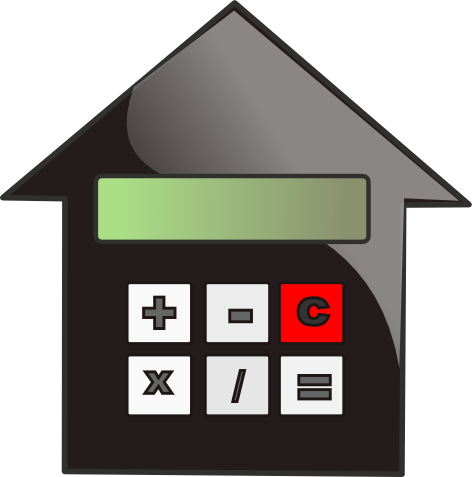\(\text{R}\,\text{400}\), the sixth withdrawal
\(\text{R}\,\text{3,30}\) + \(\text{4}\) \(\times\) \(\text{R}\,\text{1,20}\) = \(\text{R}\,\text{8,10}\)

We think you are located in United States. Is this correct?
We use this information to present the correct curriculum and to personalise content to better meet the needs of our users.
|
Previous
11.4 Value Added Tax
|
Next
12.1 Introduction and key concepts
|
The TownBank current account charges \(\text{R}\,\text{3,30}\) plus \(\text{R}\,\text{1,20}\) per \(\text{R}\,\text{100}\) or part thereof for a cash withdrawal from a TownBank ATM. The first five withdrawals in a month are free. Determine the bank charges for a withdrawal of:
\(\text{R}\,\text{400}\), the sixth withdrawal
\(\text{R}\,\text{3,30}\) + \(\text{4}\) \(\times\) \(\text{R}\,\text{1,20}\) = \(\text{R}\,\text{8,10}\)
\(\text{R}\,\text{850}\), the fourth withdrawal
Free
\(\text{R}\,\text{3 000}\), the tenth withdrawal
\(\text{R}\,\text{3,30}\) + \(\text{30}\) \(\times\) \(\text{R}\,\text{1,20}\) = \(\text{R}\,\text{15,30}\)
\(\text{R}\,\text{250}\), the seventh withdrawal
\(\text{R}\,\text{3,30}\) + \(\text{3}\) \(\times\) \(\text{R}\,\text{1,20}\) = \(\text{R}\,\text{6,90}\)
The Success Current Account charges \(\text{R}\,\text{3,75}\) plus \(\text{R}\,\text{0,75}\) per full \(\text{R}\,\text{100}\), to a maximum charge of \(\text{R}\,\text{25,00}\) for debit card purchases. Determine the charges for a purchase of:
\(\text{R}\,\text{374,55}\)
\(\text{R}\,\text{3,75}\) + \(\text{3}\) \(\times\) \(\text{R}\,\text{0,75}\) = \(\text{R}\,\text{6,00}\)
\(\text{R}\,\text{990,87}\)
\(\text{R}\,\text{3,75}\) + \(\text{9}\) \(\times\) \(\text{R}\,\text{0,75}\) = \(\text{R}\,\text{10,50}\)
\(\text{R}\,\text{2 900,95}\)
\(\text{3,75}\) + \(\text{29}\) \(\times\) \(\text{R}\,\text{0,75}\) = \(\text{R}\,\text{25,50}\). This exceeds the maximum charge or \(\text{R}\,\text{25}\), so the bank charge will be \(\text{R}\,\text{25,00}\).
You are given the following information about bank charges for a TownBank current account.

Withdrawals
Over the counter: \(\text{R}\,\text{23,00}\) plus \(\text{R}\,\text{1,10}\) per \(\text{R}\,\text{100}\) or part thereof
TownBank ATM: \(\text{R}\,\text{3,50}\) plus \(\text{R}\,\text{1,10}\) per \(\text{R}\,\text{100}\) or part thereof
Another bank's ATM: \(\text{R}\,\text{5,50}\) plus \(\text{R}\,\text{3,50}\) plus \(\text{R}\,\text{1,10}\) per \(\text{R}\,\text{100}\) or part thereof
Tillpoint - cash only: \(\text{R}\,\text{3,65}\)
Tillpoint - cash with purchase: \(\text{R}\,\text{5,50}\)
Calculate the fee charged for a \(\text{R}\,\text{2 500}\) withdrawal from a TownBank ATM.
\(\text{R}\,\text{3,50}\) + \(\text{25}\) \(\times\) \(\text{R}\,\text{1,10}\) = \(\text{R}\,\text{31,00}\)
Calculate the fee charged for a \(\text{R}\,\text{750}\) withdrawal from another bank's ATM.
\(\text{R}\,\text{5,50}\) + \(\text{R}\,\text{3,50}\) + \(\text{8}\) \(\times\) \(\text{R}\,\text{1,10}\) = \(\text{R}\,\text{17,80}\)
Calculate the fee charged for a \(\text{R}\,\text{250}\) withdrawal from the teller at a branch.
\(\text{R}\,\text{23,00}\) + \(\text{3}\) \(\times\) \(\text{R}\,\text{1,10}\) = \(\text{R}\,\text{26,30}\)
What percentage of the \(\text{R}\,\text{250}\) withdrawal in question (c) is charged in fees?
\(\frac{\text{26,30}}{\text{250}} \times \text{100}\)=\(\text{10,52}\%\)
Would it be cheaper to withdraw \(\text{R}\,\text{1 500}\) at the bank, from a TownBank ATM or from a till point with a purchase?
At the bank: \(\text{R}\,\text{23}\) + \(\text{15}\) \(\times\) \(\text{R}\,\text{1,10}\) = \(\text{R}\,\text{39,50}\). At a TownBank ATM: \(\text{R}\,\text{3,50}\) + \(\text{15}\) \(\times\) \(\text{R}\,\text{1,10}\) = \(\text{R}\,\text{20,00}\). At a tillpoint with a purchase: \(\text{R}\,\text{5,50}\). So it will be cheapest to draw at a tillpoint, with a purchase.
Study the graph and answer the questions that follow:

Complete the table below: (Fill in all the missing spaces)
Amount invested (in Rands) | \(\text{100}\) | \(\text{200}\) | \(\text{300}\) | \(\text{400}\) | \(\text{500}\) | \(\text{600}\) | \(\text{700}\) |
Interest Earned (in Rands) | \(\text{10}\) | \(\text{30}\) | \(\text{50}\) | \(\text{70}\) | |||
Interest/Amount \(\times\) \(\text{100}\) (Interest Rate) |
Amount invested in Rands | \(\text{100}\) | \(\text{200}\) | \(\text{300}\) | \(\text{400}\) | \(\text{500}\) | \(\text{600}\) | \(\text{700}\) |
Interest Earned in Rands | \(\text{10}\) | \(\text{20}\) | \(\text{30}\) | \(\text{40}\) | \(\text{50}\) | \(\text{60}\) | \(\text{70}\) |
Interest/Amount \(\times\) \(\text{100}\) (Interest Rate) | \(\text{10}\%\) | \(\text{10}\%\) | \(\text{10}\%\) | \(\text{10}\%\) | \(\text{10}\%\) | \(\text{10}\%\) | \(\text{10}\%\) |
What kind of proportionality exists between the amount invested and the interest earned?
Direct proportionality.
You decide to invest \(\text{R}\,\text{10 000}\). Calculate the amount of interest you can expect to earn.
Interest rate is fixed at \(\text{10}\%\). \(\text{10}\%\) of \(\text{R}\,\text{10 000}\) = \(\text{R}\,\text{1 000}\) of interest earned.
Complete the table below by calculating the missing amounts.
Amount (R) | \(\text{17,95}\) | \(\text{33,80}\) | \(\text{4,50}\) | ||||
VAT (R) | \(\text{2,51}\) | \(\text{14,00}\) | \(\text{1,4}\) | ||||
Total (R) | \(\text{20,46}\) | \(\text{11,40}\) | \(\text{221}\) | \(\text{404,00}\) |

Amount (R) | \(\text{17,95}\) | \(\text{100,00}\) | \(\text{10,00}\) | \(\text{33,80}\) | \(\text{4,50}\) | \(\text{193,86}\) | \(\text{354,39}\) |
VAT (R) | \(\text{2,51}\) | \(\text{14,00}\) | \(\text{1,4}\) | \(\text{4,73}\) | \(\text{0,63}\) | \(\text{27,14}\) | \(\text{49,61}\) |
Total (R) | \(\text{20,46}\) | \(\text{114,00}\) | \(\text{11,40}\) | \(\text{38,53}\) | \(\text{5,13}\) | \(\text{221,00}\) | \(\text{404,00}\) |
|
Previous
11.4 Value Added Tax
|
Table of Contents |
Next
12.1 Introduction and key concepts
|